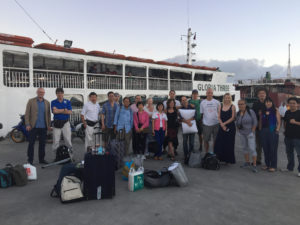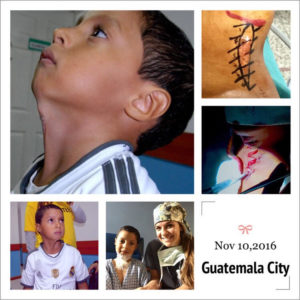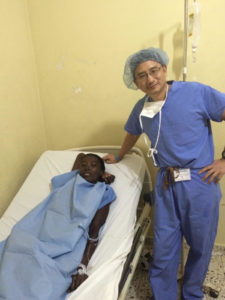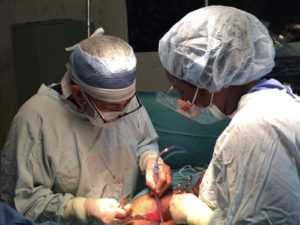Introduction of International Medical Mission
By Steven Shu, MD, MBA
Preface
For most of us, it is a commonplace of daily life that we take for granted: when you feel sick you see a doctor and get the proper treatment. However, for about 1.2 billion people in the world (according to the World Health Organization statistics), access to life-saving medical treatments is not even an option. Many families need a few years earning just to be able to see a doctor. Millions of people are trapped and tortured by diseases due to poverty; some even die from diseases that can be easily cured. There are many medical groups that work to help improve the medical conditions of poor third world countries and stop as many preventable deaths as possible. This article is intended to provide basic information on medical mission trips and also share some of my own experiences and insights from my previous trips.
- What is involved with international medical missions?
- What are reasons for wanting to attend a medical mission trip?
- What are the challenges of medical missions?
- How do you find a suitable medical mission organization for yourself?
- How do you prepare at both personal and professional levels?
What is involved with international medical missions?
Medical missions were originated by Western Christian missionaries who traveled to locales within Asia, Africa, or Latin America and were involved with endeavors of the administration of medical treatment. Nowadays, there are many different options for those looking to join a medical mission organization; most of these organizations are still faith based but there are non-faith based organizations that sponsor mission trips as well. The length of a mission trip will vary depending on the location of the trip and the organization sponsoring it, but most are about 1-3 weeks long. Doctors Without Borders requires a full year (in some cases, six months) of service before attending a mission trip, so it is currently not suitable for full time doctors.
At present, the number of American Chinese doctors in Northern America who regularly go on a medical mission is still relatively small. The reasons for this might be:
Eastern-Western cultural differences
- Most international medical programs are dominated by religious organizations
- Not familiar with international medical volunteering
- Doctor’s own busy daily work and life schedule
- Participation in international medical costs
What are reasons for wanting to attend a medical mission trip?
In many situations, it seems to me that many people are not yet able to understand why medical volunteers would spend so much money and time to go to an underdeveloped country for a few short weeks every year. How can it make a difference to the health of these people? But there really are a lot of doctors who genuinely want to come in and want to know how to start such a dedicated journey.
There are many reasons for wanting to attend a medical mission trip. You may have heard the story of the boy who tries to save the starfishes on the beach. Yes, we might not be able to change the entire world, but at least we can change a small part of it for someone. A good way to counter that is to break the big challenge down into smaller pieces and then take those one at a time–like one starfish at a time. And to that one starfish, it can make a world of difference.
Helping the needy brings us strong inner happiness and joy. Not only is it a new adventure with foreign cultural experiences, but it also helps us to rethink the meaning of life.
In my past trips, whether it is to go to Haiti or the Philippines, there are always some wonderful experiences. My team colleagues and I used our knowledge and skills to provide timely and necessary help to those who really needed it, and the joy that these trips brought to us is unparalleled and sometimes unforgettable. We are touched and changed by the experience far more than the people that we are there to help. It helps to strengthen my own inner self and encourages me to help more people.
We are able to fulfill ourselves through medical missions. As Ralph Waldo Emerson said, “It is one of the most beautiful compensations of this life that no man can sincerely try to help another without helping himself.”
What are the challenges of medical missions?
Before you decide to go on a mission trip, you must evaluate yourself and decide if a mission trip is the right fit for you. Many of these trips will be in harsh, unforgiving environments and require you to endure long, physically demanding work days with limited supplies. Your sleep cycle may change drastically, causing sleep deprivation, and you should also prepare for unexpected circumstances, such as only taking cold showers or not taking showers at all, no electricity, and no Internet or Wi-Fi access. The food may be very different from what you are used to, and you should consider the language barrier and cultural differences as well. In addition to these conditions, you will also have to face the long flight home with jet lag afterwards once you return to your own work. If you have a spouse, you will need to get their consensus and support before making the decision to attend a mission trip.
Speaking from experience, I find that the most difficult obstacles to overcome during these trips are:
- No Internet or Wi-Fi access
- Lack of sleep
- Extreme hot weather
- Neck and back pain caused by long hours of surgeries
- Time zone difference
The impact on your mental health includes depressive thoughts and feelings due to the brutal reality of the situation at hand and the limited help that can be provided.
How do you find a suitable medical mission organization for yourself?
Choose an organization that fits with your ideals, personal circumstances, and tolerance. There may be several different options for the same project, so pick one that is suitable for you. For example, I have lived in the Midwest for over 20 years and have grown accustom to the cold winters. When I went to Haiti for the first time in July 2015, the summer heat was intolerable. One day, we were travelling to a rural area that was very far away, and the combination of the heat with severe road bumps caused me to start vomiting when we were less than halfway to our destination. The second half of the trip was the most uncomfortable, as I had to endure continued vomiting until reaching our destination. Once we arrived, I had to lie down for 15 minutes before beginning work. Even worse was the serious diarrhea that followed on the day I returned to Minnesota. Perhaps my Midwestern buildup does not fit in the summer of Haiti. Fortunately, the Haitian project runs every spring, summer, and autumn, so in the past two years I chose the October project instead, and the trip went much more smoothly, without any illness.
If the cost of the trip is a concern for you, you can always find an organization that does not require your donation besides travel cost. In fact, many organizations only require you to pay for your own travel expenses if they are registered non-profit. The cost of travel for the trip is tax-deductible in America. The operation of the organization depends on donations, so you will generally be encouraged to bring in some donations.
The following list contains some of the major international volunteer groups or institutions. You can visit their website for detailed information.
International Medical Volunteers Association
Missionary Ventures International
Volunteers in Medical Missions
Mercy and Truth Medical Missions
International Accelerated Missions

Medical International Rapid Response
Medical, Eye and Dental Care Organization
* This list is only used as part of the operation of the International Medical Organization as a reference, and does not include all international medical organizations. Readers can receive more detailed results from internet searches.
How do you prepare at both personal and professional levels?
Once you have identified a suitable medical organization for you, take some time to discuss with the head of the organization and other volunteers.
Communication and consultation: gain a comprehensive understanding of the program, the purpose of the trip, the composition of the team, the specific operation process, the time, location, and the duration of the entire operation. Make sure you are clear of the expectations; know what you can expect from them and know what they expect from you.
Specifically ask about travel costs, including travel expenses and additional charges that may be required when you are abroad. Try to understand the need for additional contributions from the participants or other sponsors (fundraising).
Important pre-departure preparations include:
- Passport and visa
- Vaccinations
- Book flight and hotel
- Clothing and supplies
- Commonly used drugs
Passport and visa
American citizens can go to many countries without a visa. However, the following countries require visas: Brazil, China, Russia, India, Vietnam and most countries on the African continent. Passport applications usually take four to six weeks, but some visas may take months to be done.
Apply for temporary medical license
Many countries require you to apply for a doctor’s temporary practice permit in advance; your organization should help you with this process.
Immunization
The organization you are participating in is usually able to tell you the immunizations you need. The Centers for Disease Control and Prevention (CDC) website (www.cdc.gov) has a wide range of information about specific country immunization, regional diseases, and tips on how to stay healthy abroad. You can also go to a travel clinic for consultations and immunization. However, immunization and prophylactic drugs are not 100% effective in preventing disease, so you should familiarize yourself with information about disease prevention. You can also visit www.state.gov for any travel restrictions or warnings from the US Department of State regarding the host country.
Deciding what to bring with you
In addition to basic daily necessities, determine what to bring in accordance to the location and length of time of your trip, as well as the local climate. Haiti and African countries are very hot and do not require heavy clothing. Avoid carrying expensive or valuable items with you, as theft is common in poor areas.
Instead of buying locally, you should make a list of supplies in advance, as some things in third world countries can be cheap but others are unexpectedly expensive.
Every time I go on a trip I always bring the following medicines for my own use:
- Medicines that are currently being taken.
- A small first aid kit. It should include antihistamine, Prednisone, antacid (PPI), commonly used antibiotics such as Ciprofloxacin, Augmentin, and Z-pack, painkillers, sleeping drugs (Ambien), antidiarrheal and antiemetic, sticky bandages, antibiotic ointment, Band-Aids, etc.
Two year ago, I went to the Philippines mission trip, and I slipped and fell off a boat, causing a serious soft tissue contusion and skin rupture on my leg. The first aid kit was very helpful in this situation, as I was able to immediately disinfect and bandage the wound, and take some painkillers afterwards.
You may not experience motion sickness very often in the US, but if you happen to travel somewhere with a hot climate and ride in a non-air conditioned vehicle on bumpy terrain, you will likely become motion sick and vomit like I did when I visited Haiti for the first time, so bring a few vomit bags just in case. Also, many third world countries are BYOTP ((with their own toilet paper), so make sure to bring some toilet paper as well.
Use small, travel size bottles for toiletries such as shampoo and conditioner, and only use as much as you need to make your toiletries last longer. Remember to also bring sunscreen, mosquito repellent pads, and slippers to wear in the shower. When travelling to Africa’s remote places, it is better to use mouthwash instead of brushing your teeth, because water supply shortages can occur, or there may not be access to water at all. It is also useful to carry anhydrous hand sanitizer and wet tissues.
For medical supplies
Because our focus is on outpatient surgeries, we brought all our surgical supplies from the United States, including surgical devices, disinfectant, anesthetic, sterile towels, sterile gloves / other gloves, gauze, needles, Band-Aids, garbage bags, and so on. It is not an easy task to bring all the supplies you need for surgery. The main leader of this task is the responsibility of Dr. Stein, the head of our team. Each team doctor should bring their own headlights and batteries, sterile gloves for their hand size, and other medical gloves.
The basic rule for travelling to third world countries is the same: if you need it, you better bring it. This includes batteries, because often times there will be power outages or no electricity at all. Medicine and supplies are usually expensive, so you should bring as much as possible.
There are many ways to get free or low cost medicines:
- Contact the pharmaceutical company’s pharmaceutical representative.
- Apply for free medications through non-profit organizations supporting the medical mission.
- Use near expired drugs.
- Purchase from private pharmacies or clinics at wholesale price.
Before the team assembly boards, evenly pack different backup drugs in a few boxes in case luggage arrives late or is lost, so that work will not be delayed. Once we got ready for the surgery in Haiti, one team member could not find a bottle of anesthetic. If there is no anesthetic, we have no way to do surgery. Luckily, it was a false alarm and finally we found that bottle of anesthetic.
When preparing medical supplies, look into the medical condition in the country you will travel to. Some very poor countries do not have even the most basic of medical equipment, such as thermometers, sphygmomanometers, blood glucose meters, and ECG machines. A general rule of thumb: do not casually assume anything, and make sure to bring everything you may need. It is better to be safe than sorry.
Learning about culture
It is also very important to learn about the culture of the country you will be traveling to. Not only will this increase your knowledge, but more importantly, it will prevent you from offending the people you are trying to help. Familiarizing yourself with local customs and rituals will help you get along with locals, which will also make it easier to help them in an efficient manner.
Other precautions
In some areas, there is no control over fertility, pregnancy tests, or prenatal care, so women of childbearing age should be considered pregnant until proven otherwise. Do not use class C and D drugs unless the woman has had a tubal ligation, hysterectomy, or is postmenopausal.
In Haiti and Africa, volunteers are required to abide by the three principles, “Boil it, Peel it, or Forget about it.” You can only eat fruit that is boiled or can be peeled. We never dared to eat outside besides the hotel food and the food we brought ourselves. Even when eating hotel food, it is best not to eat cold dishes. Two years ago when I first went to Haiti without any experience, one cold dish caused me serious diarrhea.
Medical workers are often too busy to eat on time. The mindset of our team is to work continuously until the job is done. We were often on the road at noon from one clinic to another, so there was no time for lunch, and sometimes even no water to drink (just a few bottles from the hotel to share among us). When I went to Haiti a second time, I brought many protein bars, biscuits and peanuts; snacks that are both nutritious and easy to carry. If you go to Africa, you should consider bringing some finished or semi-finished foods.
Another thing to consider is preparing a lot of one dollar bills. For Haitians and Africans, one dollar is a very generous tip. Every time we go to Cap Haitian airport in Haiti, there are several porters are waiting at the airport gate to help us, even if we do not need their help. When I went to Haiti for the first time, I was not used to this kind of help. While I was getting my big suitcase, the porter had moved my smaller luggage bag without my consent. I was shocked at first because there was a computer and several important documents in the bag, but now I will be very polite to thank the porters and give them tips. Even if only one person helps you, when you give them a tip, the other porters will reach out to you too, so I always prepare some more tips because I like to see the smiles on their faces.
The other big reward is that every time I go back to Haiti or the Philippines, it is always exciting and happy to see the local collaborators, nurses and old volunteers. I also meet new friends each time, and together in the work, we forge a deep friendship.





